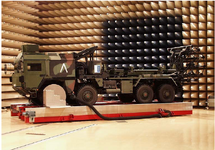SaparotRob
Unter Gemeine Geschwader Murmeltier XIII
I hope the wound doesn't lead to heart trouble.
Top Russian general narrowly escapes Ukrainian attack that killed 200: Report
Russia's highest-ranking uniformed officer made a secret trip to the front lines in eastern Ukraine last week and narrowly escaped a Ukrainian attack,www.washingtonexaminer.com
Arrived on the April 29th to take personal commend, and at least wounded the next day.




